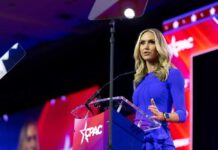(JustPatriots.com)- Only a few weeks before he left office did former president Donald Trump realizes that the White House communications office had released his schedule as president, something he had changed.
Trump learned that his schedule was public during a deposit with the House committee on January 6, according to Judd Deere, a former White House deputy press secretary, whose testimony was made public on Tuesday.
Deere informed the committee that every evening they prepared and released daily guidance for the following day of the President’s public schedule.
“The President learned that, for the first time, my understanding is that we released a public schedule of his to the public beginning sometime around mid to late December.
He wanted to alter how we carried out that task,” Deere continued.
The new public schedule was a couple of sentences about what his day would consist of rather than specific times and titles of events in an outline form. Trump had instructed his staff to simply write that he had “many calls and many meetings” on any given day.
Brent Griffiths noted the importance of Deere’s testimony. How to account for the president’s schedule has been one of the Trump White House’s longest-running storylines, which Deere’s testimony addressed.
According to Griffiths, when an aide revealed to Axios nearly every day of the president’s private schedule over three months in 2019, Trump and his allies went on the defensive. According to private releases, Trump spent almost 60% of his time in unscheduled “Executive Time” windows.
The schedules reveal that Trump, who rises early, typically spends the first five hours of the day in Executive Time. Trump is scheduled to be in “Location: Oval Office” daily from 8 to 11 a.m.
Six sources with direct knowledge claim that Trump, who frequently rises before 6 a.m., is never in the Oval during those times.
Instead, he stays at home during the mornings, watching TV, reading the newspaper, and calling friends, colleagues, members of Congress, and informal advisers to discuss what he sees and reads.















